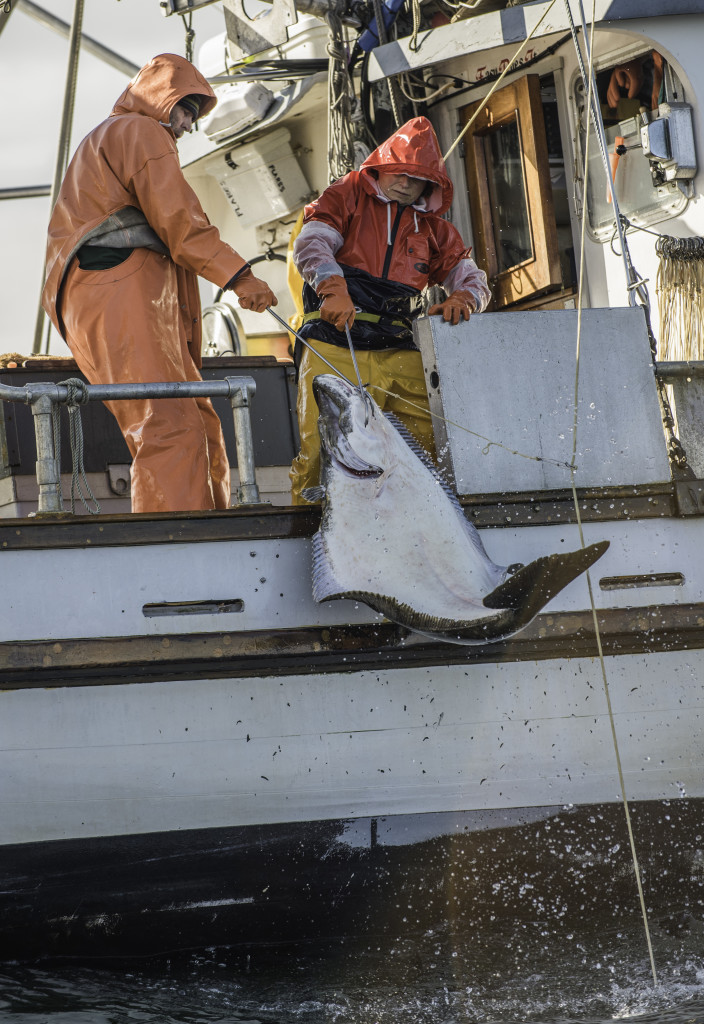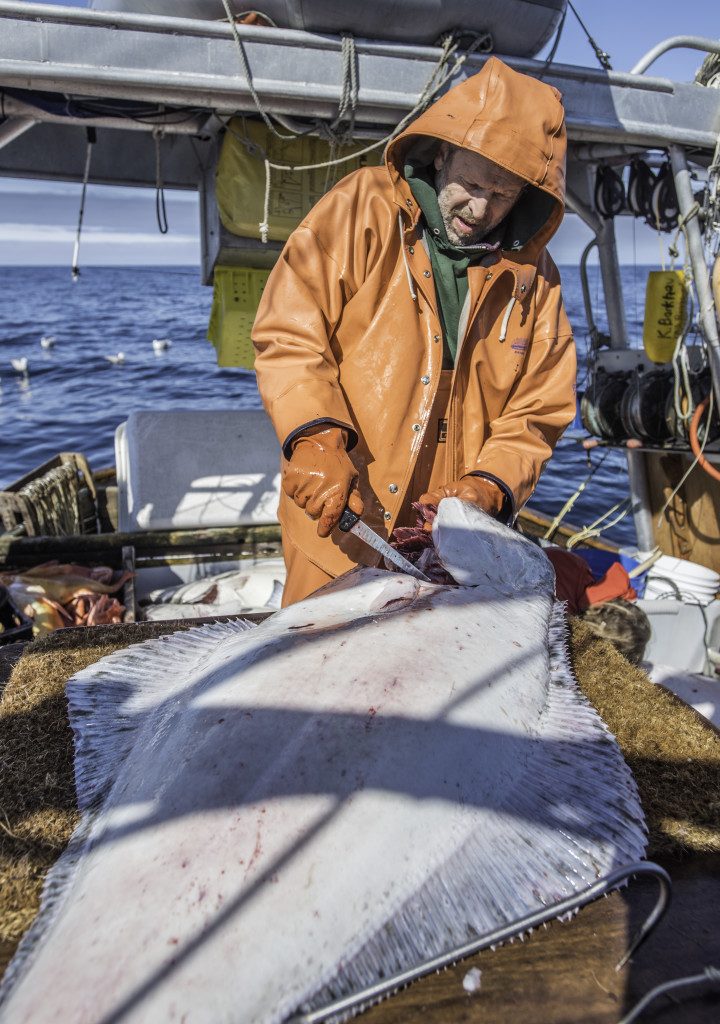

WHAT IS HALIBUT? #
The largest flat fish (Hippoglossus) from the right eye flounder family (Pleuronectidae). They are a variegated chestnut brown on the top to camouflage into the sea bed with a creamy underbelly to resemble the light above. They can grow up to 500 pounds with current minimum landing size of 32 inches, about 8 years of age.
WHERE DOES HALIBUT COME FROM? #
Halibut live on the bottom of continental shelf called the demersal zone comprising the water volume that is nearest the seabed, most abundant in the Northern Pacific and Atlantic Oceans.
WHY DOES IT TASTE SO GOOD? #
Halibut are bottom feeders on smaller herring, salmon and smaller fish. They have an abundant supply of crustaceans such as crabs and shrimp.
BEST CUTS #
The size of the fish promotes braking down into different cuts, with the tough, inedible, small scaled skin removed.
- Fletches are the four fillets removed from the frame lengthwise down the backbone. Center cut and tail cut fillets come from this area.
- Full Moon cuts across the whole fish with Half Moon cuts across half including the bone frame.
- Halibut cheeks are highly treasured for their snow white color and flaky texture, about the size of large scallops.
- Halibut bellies are richer with higher fat content also the best cut for cold smoking.
- Halibut livers contain nutrient rich oil, but are often discarded.
- Head and frame great for fish stock and soups.

1-Fletches. 2-Full Moon Steak. 3-Half Moon Steak
4-Cheeks. 5-Portions. 6-Roast. 7-Split Roast
WHY IS IT GOOD FOR ME? #
Halibut has a resilient, dense white flesh which contains 3% fat and 27% protein from their lean diets. Halibut is a source for vitamin B-6, B-12, Niacin, and range of the minerals phosphorus, potassium and selenium.
HOW TO COOK? #
Best to cook halibut with moist, steaming, crimping, poaching and sous vide. Fast heat methods such as pan roasting, sauteing and frying.

HOW NOT TO COOK? #
The lean Halibut meat tends to toughen in dry heat such as broiling, grilling and longer oven roasting cooking times.
LIKE SMOKE? #
Cold smoking preserves the moist texture of the meat, raising temperature to congeal the proteins only at the end.
HOW FRESH? #
The most sustainable day boat by line fishing, returning to port and the market each day delivers the best quality.
AMAZING HALIBUT FACTS #
Halibut is born with an eye on each side of their flat head swimming with their belly towards the bottom. As they mature at about 6 months of age and about 1 inch long, the left eye migrates over their head to the right side, while darken pigmentation is focused on the eyed side. Soon they begin to swim flat like adults and migrate down the water column to their home on the sea bottom demersal zone.



